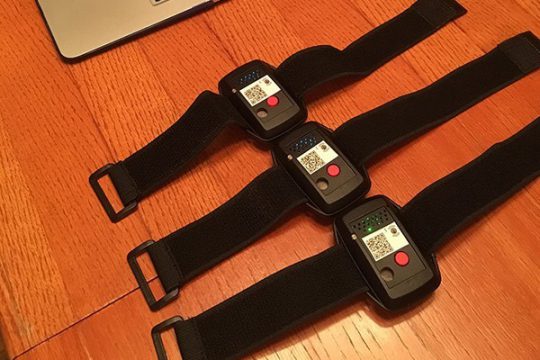MākuSafe® featured in PropertyCasualty360
September 4, 2018
MākuSafe’s wearable looks to data to create a safer workplace
MākuSafe’s wearable device gathers data to help identify high-risk trends in manufacturing facilities.
Denny Jacob is a staff reporter for PropertyCasualty360.com
The power of automation is undeniable in today’s workforce. Around the world, automation has allowed manufacturers to produce goods with greater efficiency and speed with a fraction of the workforce that was once needed.
Despite the advances in technology, workers are still at risk — from contact with object equipment, slips and trips, exposure to chemicals and much more. — This leaves employers open to workers’ compensation claims, lawsuits, fines from the Occupational Safety and Health Administration and much more.
How can employers in the manufacturing industry counter human error, technical mishaps and environmental conditions? One possible way is with wearables like MākuSafe.
Related: Wearables are making the workplace safer
MākuSafe’s inception
As a Des Moines, Iowa-based InsurTech SaaS/Data startup, MākuSafe’s wearable device, which workers wear as a band around their arm, gathers data to help identify high-risk trends in manufacturing facilities, allowing safety managers to mitigate the risk of worker injury.
“I want to see exactly what each individual worker is being exposed to… determine where the highest amount of risk is in a facility,” says Gabriel Glynn, co-founder and CEO of MākuSafe.
The son of a machinist and safety manager, Glynn is no stranger to the world of manufacturing. After spending time with various startups, he decided to start The Advanced Manufacturing Podcast. As a result, Glynn began visiting more facilities and talking with safety managers.
“It started to paint a picture of a process that I felt like was pretty out of date which was paying an outside company once a year to come in and take readings on environmental conditions and just assume that the other 364 days a year were going to be unchanging,” says Glynn.
Ultimately, he wanted to do two things: to constantly gather environmental conditions around the worker and send that data to the cloud in real time, and directly gather such data from each individual worker.
Related: Leveraging technology for workplace safety
Understanding the technology
To create such a wearable, Glynn turned to Mark Frederick, co-founder and chief technology officer at MākuSafe, whose technical background is filled with experience relating to cloud computing, machine learning, IoT (Internet of Things) and embedded systems.
After some trial and error with early beta devices, collecting over 12 million data points in the process, the two co-founders realized that it was possible to collect these types of information, report it to an application running on the internet and visualize the data.
The wearable is designed to look outward: if 10 workers are in one space, all 10 devices are collectively monitoring data points surrounding all 10 workers by “painting a total picture of their work conditions and where the risks are that contribute to them possibly being injured on the job.”
“The secret really is in the trends,” says Frederick. “We know if we can identify a trend, it’s pretty likely there could be an injury in the future.”
Related: Wrangling workers’ comp claims in a notoriously dangerous industry
The insurance implications
“We weren’t really focused on the insurance industry in the beginning,” says Glynn.
The company launched on May 9, 2016. Until about a year in, MākuSafe® wasn’t on the insurance industry’s radar. Once it was, the workers’ compensation implications became much clearer. As the wearable collects data and analyzes trends within the workplace, employers can be proactive and remedy possible risks before they affect workers. For workers, they have the option to push a button if they see or experience something that is unsafe.
Compared to other wearables, Glynn says MākuSafe® stands out in two ways: the first is a deep knowledge of blue-collar workers — having grown up around facilities and spending time around them — such as the placement of the device complying with regulations, and the second is a focus on key environmental factors that are potential triggers for issues within a facility.
Related: Four ways connectivity is revolutionizing insurance
The final product
Currently, MākuSafe® prototypes are running at two companies. Over the next six to nine months, the next step will be to produce on a larger, economically feasible production scale to deploy more devices. They are on pace for a 2019 production launch.
While much work remains, the two are eager to improve worker safety.
“We see the opportunity to have really tight integration between automation and sensors that are on the worker so they can work in concert together,” says Frederick. “We see a really exciting roadmap ahead of us.”





